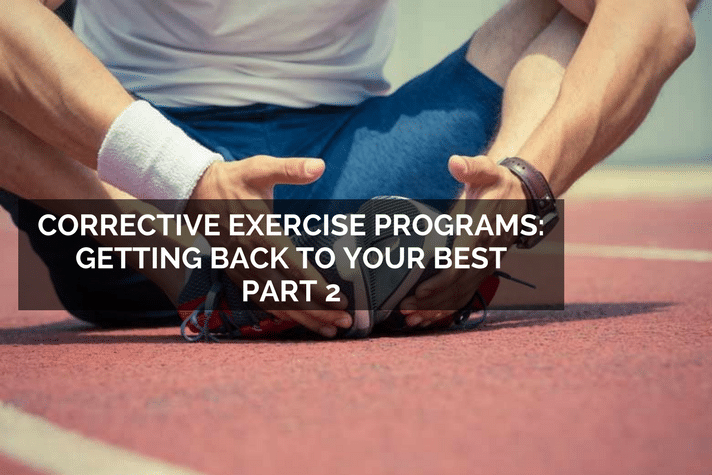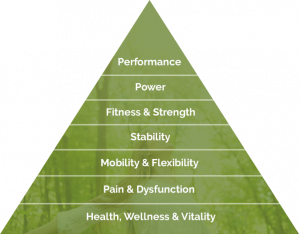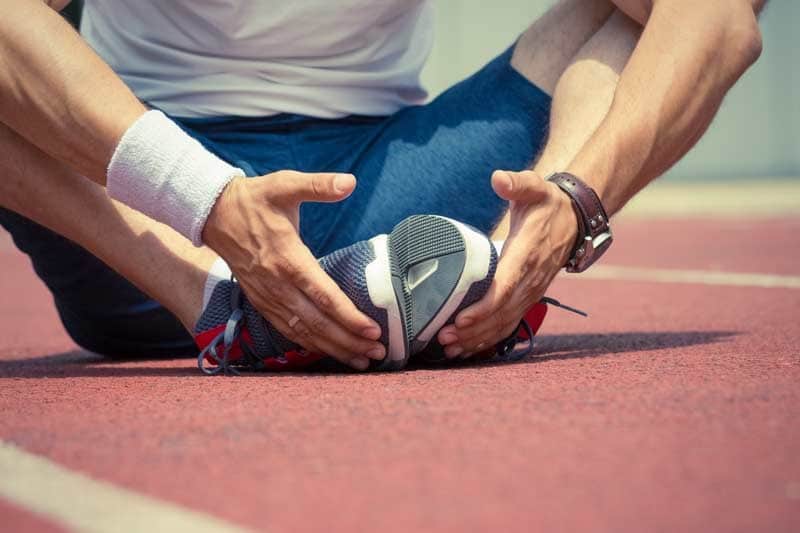
Whether you have experienced chronic pain over a long period, sustained an injury, or suffered through an acute pain episode, prevention and recovery from pain and dysfunction requires different exercises and protocols for each individual.
The Performance Pyramid provides a working framework for every client that comes to Effortless Superhuman and facilitated the creation of the ‘ES Method’.
Overcoming pain and injury may mean rehabilitating the entire body by focusing on the ‘foundation principles of health’, clearing ‘pain and dysfunction’ and then specific corrective exercises to progress upwards through the performance pyramid and return to sport or activity.

Hamstring Strain Rehabilitation
A hamstring strain is a common leg injury which can range from mild pain to a severe tear in one or more of the three (3) hamstring muscles. Common reasons for hamstring strains include:
- An unhealthy nervous system – (System wind-up)
- Subluxations within the spinal column (Cervical, thoracic, and/or lumbar spine)
- Dysfunctions (lack of normal range) at any joint in the body – Jaw, shoulders, elbows, spinal column, hips, knees, and/or ankles
- Dysfunctions (lack of normal range) in any of the major muscles in the body.
- Stiffness and a lack of strength in the hamstring muscles when the foot hits the ground
- Poor running mechanics such as overstriding or poor pelvic control
- An insufficient warm-up
- Inappropriate training loads or exercises
- Previous hamstring strains
Your ‘pain and dysfunction’ (P&D) practitioner should perform a whole-body scan to determine the cause of your hamstring pain.
- Neural-dynamic-testing (NDT) can be used to assess the health of your nervous system
- A whole-body scan is used to determine if all of the major joints in your body have a full range of movement – Jaw, spinal column, shoulders, elbows, wrists, hips, knees, and ankles.
- A whole-body scan is used to determine the length of all the major muscles in your body and assess for tightness and/or Knotts.
At a local level, your pain and dysfunction practitioner will look for pain on hamstring contraction, bruising or discolouration, tenderness, heat or a physical lump or gap within the hamstring muscle on palpation. Pulled hamstrings are graded based on severity, and an ultrasound scan or MRI can identify the location and extent of your hamstring tear.
A grade one (1) strain may give you tightness in the back of the leg, but you’ll likely be able to walk normally. Whereas with a grade three (3) tear you may need crutches to walk and will feel severe pain and weakness while noticing heat, swelling and likely bruising or discolouration.
With hamstring injuries, most people start to feel better within a few days of the injury and therefore do not seek treatment, which is why there is an extremely high re-injury rate for this type of injury. It’s essential that you seek professional guidance from a skilled ‘pain and dysfunction’ practitioner and that the root-cause of the problem is identified and fixed.
The time taken to return to sport will vary depending on the severity of the strain, how much dysfunction is found in your body, and the nature of the root-cause of your injury.
Scientific literature suggests that grade one (1) strains should be rested for about three weeks, Grade two (2) for a minimum of four to eight weeks, and grade three (3) strains (that don’t require surgical intervention) can take 12-16 weeks. The P&D practitioners at Effortless Superhuman have been able to restore function and return clients to full activity in much shorter periods of time.
‘The first goal of treatment is to achieve Clinically Clear!’
Remember, clinically clear means that the client no longer has any pain/local symptoms/altered sensations and is dysfunction-free (full mobility at all major joints and full length in all muscles). Once this is achieved we call this ‘clinically-clear’, and the client is free to be assessed at a functional level, regardless of how much time has passed from the time of injury.
Clinically Clear?Functionally Clear
Nearly one-third of hamstring strains recur within the first year following return to sport.This high re-injury rate suggests that athletes may be returning to sport prematurely due to inadequate treatment protocols and/or inadequate rehabilitation programs. Clients must satisfy every level of the performance pyramid before considering a return to sport or activity.
Hip Flexor Strain Rehabilitation
Whenever the hip flexors are put under excessive tension due to repetition or high force, the hip muscle fibres may tear.
When you strain or rupture the muscles of your hip flexor during exercise, it can cause severe pain and impaired movement.The most commonly involved muscle is the iliopsoas which originates from the lower back and inserts into the femur (thigh bone).
Hip flexor strains range from a small partial grade one (1)tear where there is minimal pain and loss of function to grade three (3) tear involving a sudden episode of severe pain and significant disability.
Hip flexor strains are often seen in high force running and kicking sports such as AFL and soccer, but people may develop this condition due to repetitive or prolonged stress on the hip flexor muscles.
A thorough examination by a P&D practitioner can diagnose a hip flexor strain and allow the beginning of rehabilitation. Once a diagnosis is established, a physical rehabilitation exercise program as outlined by the performance pyramid can return the athlete to full participation in sports in a safe and timely manner.
- Are the foundation principles of health being followed and is optimal health being achieved?
- Can a whole-body assessment identify the underlying root cause of the problem?
- Can the client be returned to a state of ‘clinically clear’?
- Can a risk profile highlight any functional limitations and allow for the precise implementation of corrective exercises and a safe return to sport?
Appropriate assessment and management of a hip flexor strains can allow clients to recover in one to three weeks and return to full participation.
Knee Injury Rehabilitation
Knee pain or injuries are common in a wide range of sports, and there are many causes. It’s essential to make an accurate diagnosis of the cause of your knee pain so that it can be treated appropriately. A whole-body assessment will reveal the root cause of your knee pain and allow your P&D practitioner to follow the appropriate treatment protocol.
- Spinal subluxations can contribute to knee pain
- Disorders in the upper cervical spine (neck) can contribute to knee pain
- Lack of mobility in the lower back, pelvis or hip joint can contribute to knee pain
- Lack of mobility in the ankle or foot can lead to knee pain and injury
- A ‘moderate’ or ‘substantial’ score on your functional risk profile (Athletic Screen) can predispose you to knee injuries or pain.
The injury itself or ‘pain episode’ often occurs during physical activity or sport. This may include sharp changes in direction, landing wrong, or a blunt force trauma to the knee at speed. The severity of the trauma depends on the degree of stretching or tearing of ligaments and other soft tissues.
- How can I prevent this from happening in the first place?
- What is the best way to overcome this type of injury?
- How can I prevent a reoccurrence of this type of injury in the future?
Ligament Sprains
In a grade one (1)sprain, the ligaments may stretch but not tear to any great extent. Pain is often limited but the event itself increases the risk of repeat injury. A grade two (2)sprain results in partial ligament tearing, swelling, and bruising. With a severe grade three (3) sprain, the ligament tears completely, causing swelling and bruising and often results in joint instability.In grade three (3) sprains clients are often unable to weight-bear and have a sense of joint instability.
Like all other pain episodes and injuries, the clinical process is the same – a thorough client history should be completed, along with a whole-body assessment. Through this process, the root-cause of the problem can be identified, and the appropriate treatment will result in the client becoming ‘clinically clear’. It should be noted that in some cases radiological investigations are necessary to accurately diagnosis the extent of damage within the knee and to determine whether an orthopedic (surgical) opinion is required.
Once the client is clinically clear, they can progress to the next stage of the recovery process and be assessed at a functional level – Athletic Screen (Risk Profile).
It’s through this accurate (objective) testing that our P&D practitioners can determine the most appropriate correctives exercises and the best return to sport/activity protocol for you.
Scientific literature suggests that healing time for a grade one (1) sprain is 3-6 weeks, and up to 12-26 weeks for more severe ligament sprains. Our P&D practitioners have been able to substantially reduce these healing times by finding the root-cause of the problem and restoring balance to the client’s body.
Exercise Rehabilitation Considerations
Each person’s unique anatomy, symptoms, medical diagnosis, and goals should direct one’s choice of treatments and exercise prescription. With that said there are precise strategies that apply to every client regardless of their injury or pain pattern.
- Neuro-dynamic testing to evaluate the health of their nervous system
- A whole-body scan to look for dysfunctions
- Finding the root cause of the problem, allowing for focused treatment and achieving a state of ‘clinically clear’.
- A functional risk profile (Athletic Screen) leading to accurate corrective exercise programming and implementation
- Retesting to demonstrate progress and clear the client’s risk profile for a safe return to sport or activity.
Before implementing any corrective exercises, consult your P&D practitioner for approval and proper technique. It’s important to remember that it can be counterproductive to apply a one-size-fits-all rehabilitation program to any sports injury.
The team at Effortless Superhuman believes that the Performance Pyramid and the concepts it represents should be applied to everyone. Though many of our clients do not participate in competitive sport, they still need to satisfy the basic requirements of each level of the pyramid on their return to physical activity.
To book an appointment with a Effortless Superhuman ‘Pain and Dysfunction’ practitioner give us a call on (08) 9388 2768 today.
